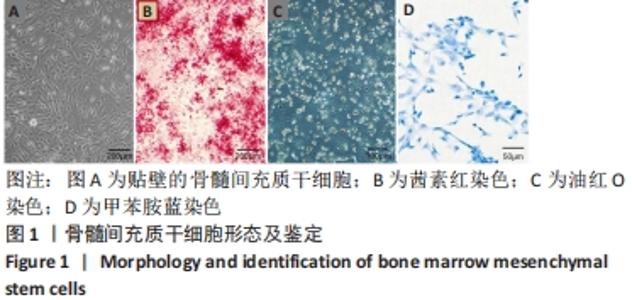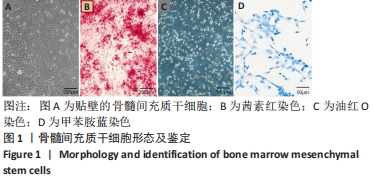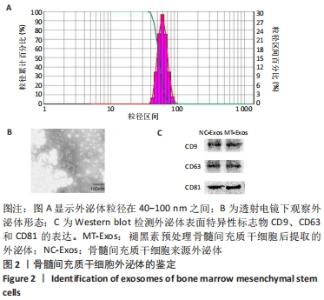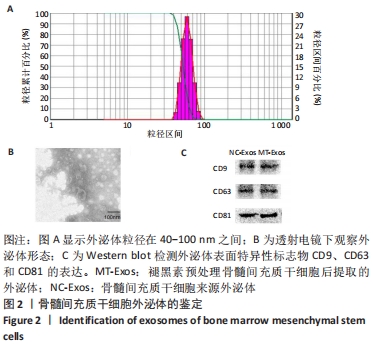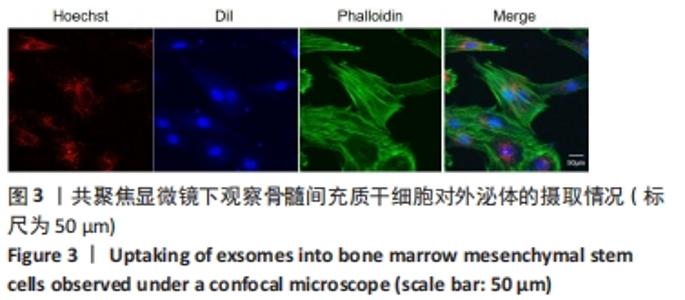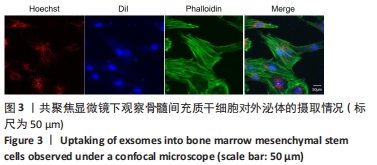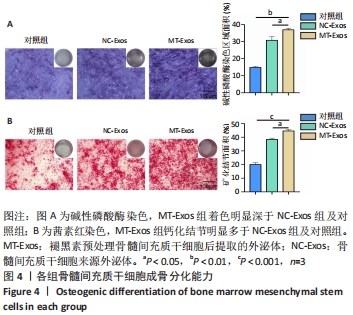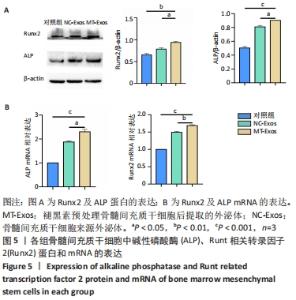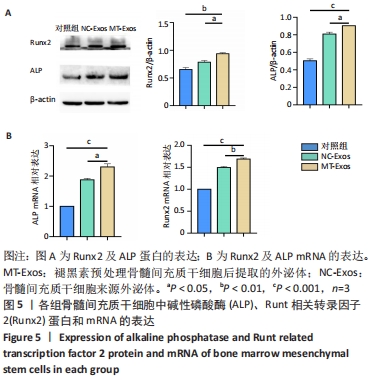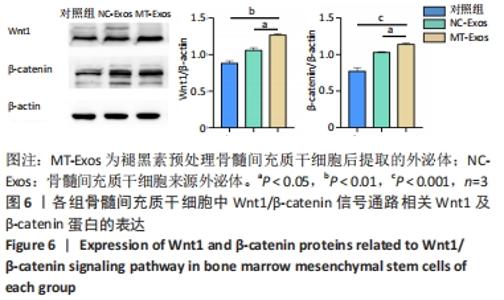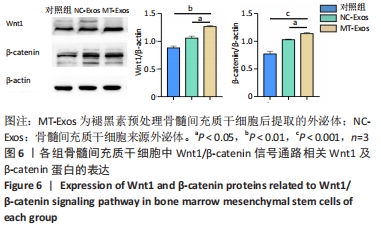[1] LI T, JIANG S, LU C, et al. Melatonin: Another avenue for treating osteoporosis? J Pineal Res. 2019;66(2):e12548.
[2] 张智海,张智若,刘忠厚,等.中国大陆地区以-2.0SD为诊断标准的骨质疏松症发病率回顾性研究[J].中国骨质疏松杂志,2016, 22(1):1-8.
[3] COSMAN F, DE BEUR SJ, LEBOFF MS, et al. Clinician’s Guide to Prevention and Treatment of Osteoporosis. Osteoporos Int. 2014; 25(10):2359-2381.
[4] DAS S, CROCKETT JC. Osteoporosis - a current view of pharmacological prevention and treatment. Drug Des Devel Ther. 2013;7:435-448.
[5] AGHEBATI-MALEKI L, DOLATI S, ZANDI R, et al. Prospect of mesenchymal stem cells in therapy of osteoporosis: A review. J Cell Physiol. 2019;234(6): 8570-8578.
[6] ZUO R, LIU M, WANG Y, et al. Correction to: BM-MSC-derived exosomes alleviate radiation-induced bone loss by restoring the function of recipient BM-MSCs and activating Wnt/beta-catenin signaling. Stem Cell Res Ther. 2020;11(1):33.
[7] LUO ZW, LI FX, LIU YW, et al. Aptamer-functionalized exosomes from bone marrow stromal cells target bone to promote bone regeneration. Nanoscale. 2019;11(43):20884-20892.
[8] ZHANG L, YU D. Exosomes in cancer development, metastasis, and immunity. Biochim Biophys Acta Rev Cancer. 2019;1871(2):455-468.
[9] MA ZJ, YANG JJ, LU YB, et al. Mesenchymal stem cell-derived exosomes: Toward cell-free therapeutic strategies in regenerative medicine. World J Stem Cells. 2020;12(8):814-840.
[10] INGATO D, LEE JU, SIM SJ, et al. Good things come in small packages: Overcoming challenges to harness extracellular vesicles for therapeutic delivery. J Control Release. 2016;241:174-185.
[11] 綦惠,黄霸,杰永生,等.干细胞外泌体对骨质疏松大鼠骨生成的影响[J].中国矫形外科杂志,2021,29(8):726-730.
[12] HARDELAND R. Aging, Melatonin, and the Pro- and Anti-Inflammatory Networks. Int J Mol Sci. 2019;20(5):1223.
[13] LIU W, YU M, XIE D, et al. Melatonin-stimulated MSC-derived exosomes improve diabetic wound healing through regulating macrophage M1 and M2 polarization by targeting the PTEN/AKT pathway. Stem Cell Res Ther. 2020;11(1):259.
[14] ZHANG L, SU P, XU C, et al. Melatonin inhibits adipogenesis and enhances osteogenesis of human mesenchymal stem cells by suppressing PPARγ expression and enhancing Runx2 expression. J Pineal Res. 2010;49(4):364-372.
[15] AMSTRUP AK, SIKJAER T, MOSEKILDE L, et al. Melatonin and the skeleton. Osteoporos Int. 2013;24(12):2919-2927.
[16] 肖大伟,刘丹平,田大川,等.突变型低氧诱导因子-1α修饰骨髓间充质干细胞来源的外泌体联合软骨再生支架治疗家兔早期软骨缺损[J].中华实验外科杂志,2018,35(5):888-891.
[17] HUANG B, SU Y, SHEN E, et al. Extracellular vesicles from GPNMB-modified bone marrow mesenchymal stem cells attenuate bone loss in an ovariectomized rat model. Life Sci. 2021;272:119208.
[18] MIANEHSAZ E, MIRZAEI HR, MAHJOUBIN-TEHRAN M, et al. Mesenchymal stem cell-derived exosomes: a new therapeutic approach to osteoarthritis? Stem Cell Res Ther. 2019;10(1):340.
[19] BHATTI FU, MEHMOOD A, LATIEF N, et al. Vitamin E protects rat mesenchymal stem cells against hydrogen peroxide-induced oxidative stress in vitro and improves their therapeutic potential in surgically-induced rat model of osteoarthritis. Osteoarthritis Cartilage. 2017; 25(2):321-331.
[20] QAZI TH, MOONEY DJ, DUDA GN, et al. Biomaterials that promote cell-cell interactions enhance the paracrine function of MSCs. Biomaterials. 2017;140:103-114.
[21] LIU Z, GAN L, ZHANG T, et al. Melatonin alleviates adipose inflammation through elevating α-ketoglutarate and diverting adipose-derived exosomes to macrophages in mice. J Pineal Res. 2018;64(1). doi: 10.1111/jpi.12455.
[22] HUANG P, WANG L, LI Q, et al. Atorvastatin enhances the therapeutic efficacy of mesenchymal stem cells-derived exosomes in acute myocardial infarction via up-regulating long non-coding RNA H19. Cardiovasc Res. 2020;116(2):353-367.
[23] SATOMURA K, TOBIUME S, TOKUYAMA R, et al. Melatonin at pharmacological doses enhances human osteoblastic differentiation in vitro and promotes mouse cortical bone formation in vivo. J Pineal Res. 2007;42(3):231-239.
[24] RADIO NM, DOCTOR JS, WITT-ENDERBY PA. Melatonin enhances alkaline phosphatase activity in differentiating human adult mesenchymal stem cells grown in osteogenic medium via MT2 melatonin receptors and the MEK/ERK (1/2) signaling cascade. J Pineal Res. 2006;40(4):332-342.
[25] LIANG B, LIANG JM, DING JN, et al. Dimethyloxaloylglycine-stimulated human bone marrow mesenchymal stem cell-derived exosomes enhance bone regeneration through angiogenesis by targeting the AKT/mTOR pathway. Stem Cell Res Ther. 2019;10(1):335.
[26] BARON R, KNEISSEL M. WNT signaling in bone homeostasis and disease: from human mutations to treatments. Nat Med. 2013;19(2):179-192.
|
